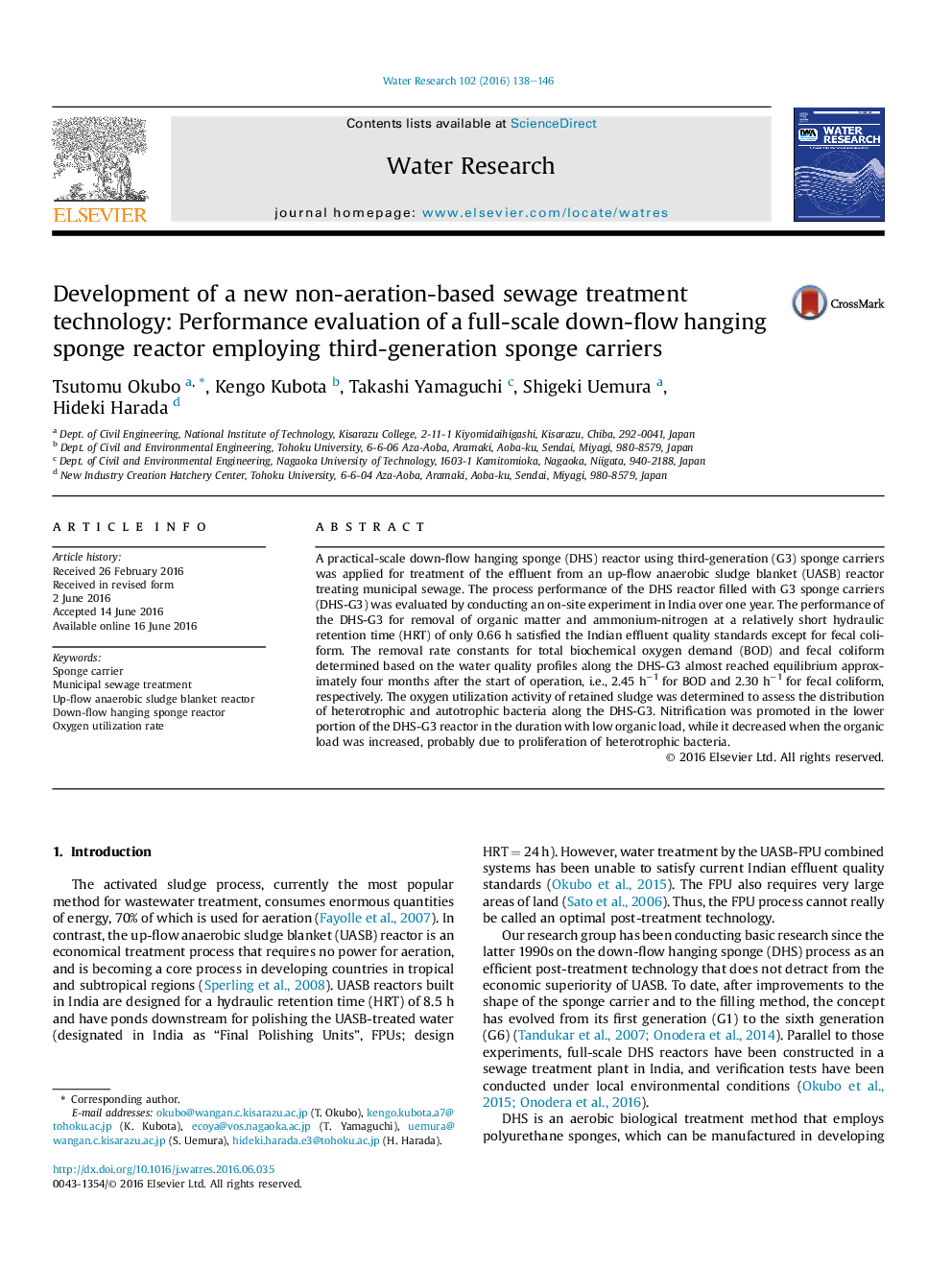| کد مقاله | کد نشریه | سال انتشار | مقاله انگلیسی | نسخه تمام متن |
|---|---|---|---|---|
| 4480847 | 1623066 | 2016 | 9 صفحه PDF | دانلود رایگان |
• DHS reactor filled with third-generation sponge carriers was evaluated over 1 year.
• Adequate removal of BOD and NH4+-N at an HRT of 0.66 h was achieved.
• Removal rate constants were at least 2.30 h−1 for BOD and FC 4 months after start-up.
• The distribution of bacteria along the reactor was inferred by OUR tests.
A practical-scale down-flow hanging sponge (DHS) reactor using third-generation (G3) sponge carriers was applied for treatment of the effluent from an up-flow anaerobic sludge blanket (UASB) reactor treating municipal sewage. The process performance of the DHS reactor filled with G3 sponge carriers (DHS-G3) was evaluated by conducting an on-site experiment in India over one year. The performance of the DHS-G3 for removal of organic matter and ammonium-nitrogen at a relatively short hydraulic retention time (HRT) of only 0.66 h satisfied the Indian effluent quality standards except for fecal coliform. The removal rate constants for total biochemical oxygen demand (BOD) and fecal coliform determined based on the water quality profiles along the DHS-G3 almost reached equilibrium approximately four months after the start of operation, i.e., 2.45 h−1 for BOD and 2.30 h−1 for fecal coliform, respectively. The oxygen utilization activity of retained sludge was determined to assess the distribution of heterotrophic and autotrophic bacteria along the DHS-G3. Nitrification was promoted in the lower portion of the DHS-G3 reactor in the duration with low organic load, while it decreased when the organic load was increased, probably due to proliferation of heterotrophic bacteria.
Figure optionsDownload high-quality image (269 K)Download as PowerPoint slide
Journal: Water Research - Volume 102, 1 October 2016, Pages 138–146
